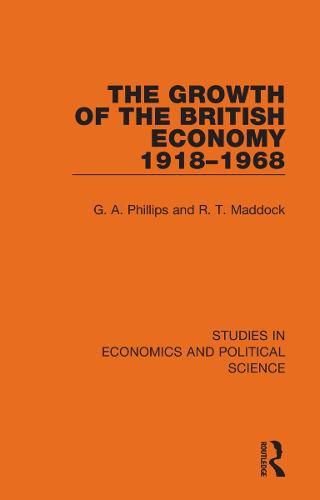Readings Newsletter
Become a Readings Member to make your shopping experience even easier.
Sign in or sign up for free!
You’re not far away from qualifying for FREE standard shipping within Australia
You’ve qualified for FREE standard shipping within Australia
The cart is loading…






Originally published in 1973, the aim of this work was to discuss the various factors governing the rate of growth of the British economy since the First World War. It endeavours to explain - or at least to provide the groundwork for an explanation of - the movements of aggregate production and productivity in this period. In so doing it examines two particular, and partly antithetical questions: why Britain exceeded the predictions of economic theorists who, until at least the Second World War, had forecast a retardation of growth in all mature industrial economies; and why, especially since 1950, the economy has expanded less quickly than many professional economists, and almost all politicians, thought possible.
The authors look, in turn, at the changing trends in effective economic demand, both domestic and foreign; the supply of labour and capital; and the role of management and the state in fostering growth. Their object is to produce a balanced mixture of the available historical and statistical evidence and the relevant economic theory. They introduce their readers, at the same time, to the more specialized works of both disciplines.
The book is the product of a fruitful collaboration between an economist and a historian, both with considerable experience in teaching students, combining their two subjects. It marries, accordingly, the qualities of apt and informative use of evidence, wide-ranging theoretical discussion, and clarity of exposition.
$9.00 standard shipping within Australia
FREE standard shipping within Australia for orders over $100.00
Express & International shipping calculated at checkout
Originally published in 1973, the aim of this work was to discuss the various factors governing the rate of growth of the British economy since the First World War. It endeavours to explain - or at least to provide the groundwork for an explanation of - the movements of aggregate production and productivity in this period. In so doing it examines two particular, and partly antithetical questions: why Britain exceeded the predictions of economic theorists who, until at least the Second World War, had forecast a retardation of growth in all mature industrial economies; and why, especially since 1950, the economy has expanded less quickly than many professional economists, and almost all politicians, thought possible.
The authors look, in turn, at the changing trends in effective economic demand, both domestic and foreign; the supply of labour and capital; and the role of management and the state in fostering growth. Their object is to produce a balanced mixture of the available historical and statistical evidence and the relevant economic theory. They introduce their readers, at the same time, to the more specialized works of both disciplines.
The book is the product of a fruitful collaboration between an economist and a historian, both with considerable experience in teaching students, combining their two subjects. It marries, accordingly, the qualities of apt and informative use of evidence, wide-ranging theoretical discussion, and clarity of exposition.